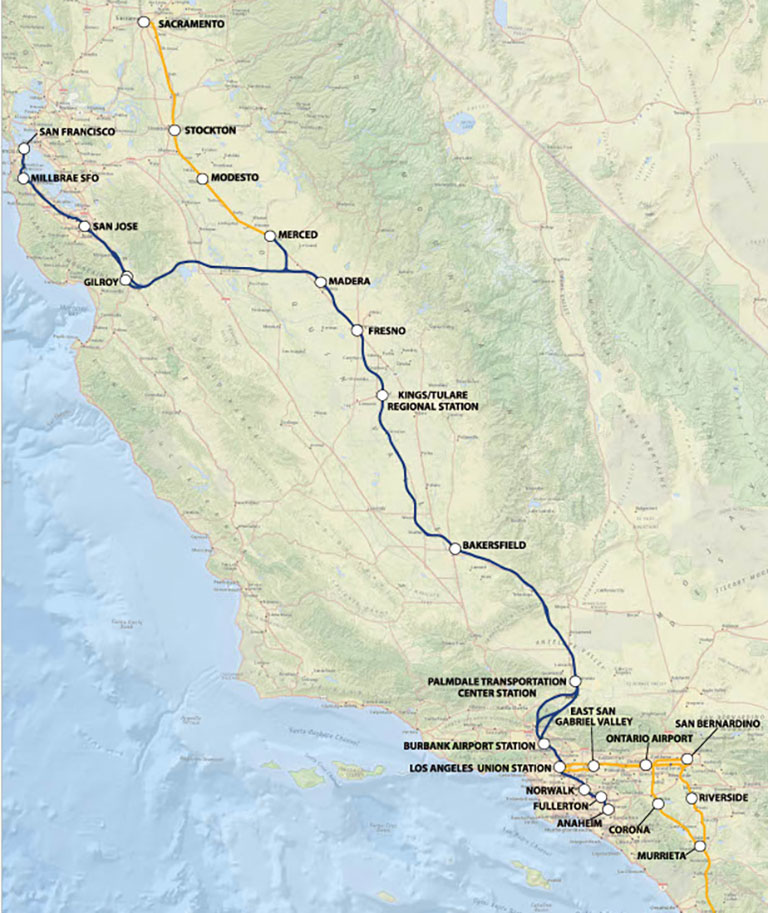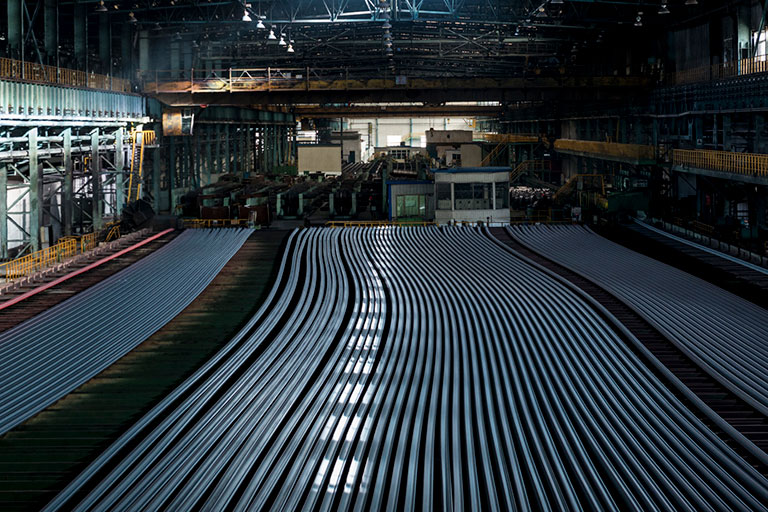The California High-Speed Rail Project plans to operate a 320kph bullet train line that connects San Francisco to the Los Angeles Basin in less than three hours.
As part of the state’s economic regeneration plans, it is undertaking an ambitious infrastructure project that will be the US’s first high-speed rail system. The lines will connect California’s mega regions and provide a significant economic boost to the state.
Initially running from San Francisco to LA, the system will eventually expand out to Sacramento and San Diego, with 24 stations spanning more than 1,200km. The high-speed line is the standard bearer for a state-wide modernisation plan that will invest billions in local and regional rail.
Due to the size of the project, and the diverse environmental conditions across the state, the work has been broken into 10 separate sections, with each undergoing its own environmental impact assessment.
Phase one prioritises the 830km span from Merced, San Francisco, to Anaheim in LA, with the current 10-hour trip expected to be brought down to just three hours.

Making an impact
It’s not just commuters who will be feeling the benefit of the new high-speed line, the economic and environmental benefits are expected to be felt across the state.
The California High-Speed Rail Authority estimates that more than 730 small businesses are engaged in the project, creating nearly 9,000 jobs. More than half the project funds are being deployed in disadvantaged communities, ensuring the economic impacts are felt where they are needed the most.
“We see the future of transportation as clean, green, and better designed for passengers and communities.” – Brian Norris, Stantec transportation business line leader
Stantec, the engineering firm responsible for delivering the project, are hopeful that it will be seen as an example for how other states can improve their infrastructure. “High-speed rail is going to improve the transportation landscape in California, with the potential to impact transportation on a national level,” said Brian Norris, Stantec’s transportation business line leader.
“We see the future of transportation as clean, green, and better designed for passengers and communities. California High-Speed Rail is a significant step in the right direction.”
The impacts are also expected to be environmental as well as economic, with the Authority committed to net-zero direct greenhouse gas emissions in construction and a build process that minimises impacts on the natural and built environment.
The green benefits of the system will also help the state tackle climate change, by reducing traffic and airport congestion, and dependence on fossil fuels for California’s major population centres.
The Authority estimates that the greenhouse gas emission savings represented by a 1,440km round trip from San Francisco to the LA basin is equivalent to 90 litres of petrol consumed or 88kg of coal burned.
 Advanced high-strength steel rails are needed to endure the mechanical stress of high-speed rail
Advanced high-strength steel rails are needed to endure the mechanical stress of high-speed rail
A transport revolution built on steel
High-speed rail offers the highest levels of commuter comfort and safety, combined with lowest environmental impact for long distance inter-city journeys. At the heart of this superior passenger experience are the high-strength, ultra-long steel rails that make high-speed train travel possible.
The 320kph plus speeds that high-speed trains hit, put incredible demands on their system’s steel rails, with the highest quality manufacturing required in order to ensure they can endure the resulting wear, impact and fatigue resistance.
Advanced manufacturing has also increased the length of individual rail sections, allowing for faster journeys that are smoother and quieter, for passengers as well as the environments through which the trains travel.
With the transition to a less carbon-intense economy already underway, it’s clear that the future of transport will increasingly be on rail for longer journeys, and it is these systems’ steel-built arteries that are helping make this greener future a reality.
Images: California High-Speed Rail Authority, worldsteel